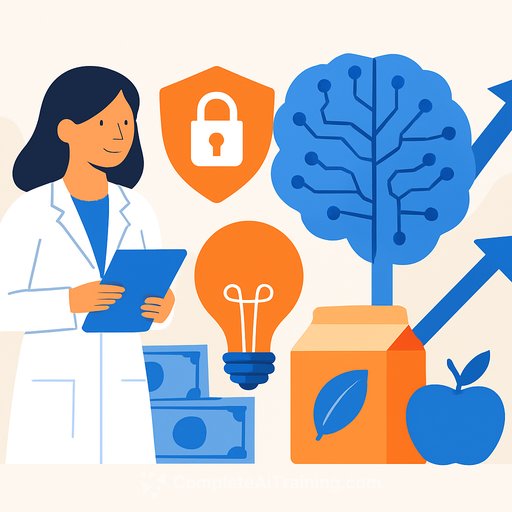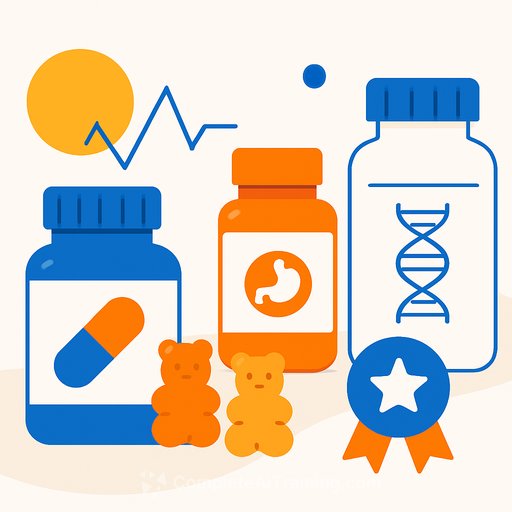AKA Foods secures $17.2M to launch a secure AI system for product formulation
Foodtech company AKA Foods Ltd has raised $17.2 million in seed funding to launch AKA Studio, a secure AI platform built to compress development cycles and improve formulation outcomes. The round was led by AI experts and entrepreneurs Alex Bronstein and Michael Bronstein. The company positions AKA Studio as the world's first secure AI system for food innovation, with enterprise deployments now scaling from its base in Amstelveen, the Netherlands.
What AKA Studio does
AKA Studio brings your sensory data, historical R&D, live experiments, ingredient specs, and regulatory documentation into one intelligent workspace. AI assistants work across this data to guide formulation and optimisation, combining texture, aroma, and taste evidence with analytical measurements and real-time research. The result: faster iteration, tighter control over variables, and clearer decisions.
Why product development teams should care
- Shorten development cycles from years to weeks by linking structured data with sensory evidence.
- Speed up clean-label reformulation, sugar and fat reduction, and supplier swaps without sacrificing sensory targets.
- Increase precision in recipe changes and reduce rework with data-backed recommendations.
- Cut cost per iteration and improve supply chain resilience through informed substitutions and constraints.
Founder and CEO David Sack said the industry holds valuable knowledge that often stays siloed. "AKA Studio gives companies the ability to capture, organise and apply that knowledge securely."
Security by design
- Secure SaaS: each client operates in a private environment. Data is never incorporated into shared model training.
- On-premise and air-gapped options are available for stricter data protection or regulatory requirements.
- Clients retain full ownership of proprietary data.
Professor Alex Bronstein, Chief Scientist at AKA Foods and Head of the Center for Intelligent Systems at the Technion - Israel Institute of Technology, described the approach as "a new type of grammar - a language for food." He noted the AI agents can connect to external data sources and recommend recipe improvements that generic models will never be able to achieve.
How the platform fits into your workflow
- Unify R&D assets: formulations, batch records, panel scores, lab measurements, shelf-life studies, and regulatory notes.
- Set constraints: allergens, nutritional targets, regional regulations, cost ceilings, and approved supplier lists.
- Run AI-assisted iterations: recipe adjustments are suggested alongside predicted sensory and analytical outcomes.
- Validate and learn: human-in-the-loop testing feeds back into the system to improve next-step suggestions.
Use cases teams are prioritising
- Clean-label swaps while maintaining texture and flavour benchmarks.
- Sugar and fat reduction with minimal drift in sensory scores.
- Supply risk mitigation via alternative ingredients with equivalent functional performance.
- New product exploration guided by historical R&D and market-aligned constraints.
Pilot playbook: get value in 90 days
- Select 2-3 formulations with clear pain points (high rework, long panel loops, volatile inputs).
- Define guardrails: nutrition targets, regulatory thresholds, allergen rules, label claims, and COGS limits.
- Integrate core data sources: sensory panel structure, lab instruments, supplier specs, and regulatory docs.
- Track KPIs: cycle time per iteration, cost per iteration, panel score delta, first-pass acceptance rate, and reformulation lead time.
Beyond food
The same sensory-AI framework applies to flavour, fragrance, cosmetics, and pharmaceuticals-anywhere precision formulation and sensory performance matter. Teams in these categories can leverage the same approach: consolidate data, set constraints, run guided iterations, and validate quickly.
"This investment allows us to expand deployment to enterprise clients worldwide and continue advancing the science behind how food is created," Sack added.
For teams upskilling on AI in product development
If you're building internal capability around AI-assisted R&D workflows, explore curated learning paths by role at Complete AI Training to accelerate adoption and standardise best practices across your teams.
Your membership also unlocks:






